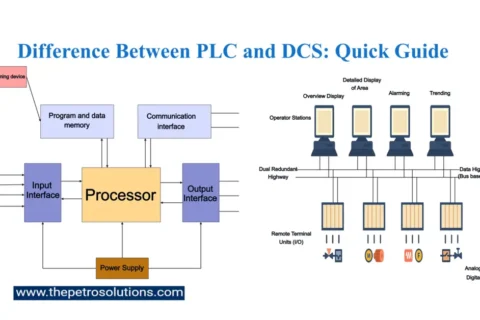A HAZOP team facilitator is a key person in conducting a successful and effective hazard and operability (HAZOP) study. A HAZOP team facilitator is responsible for leading and managing the HAZOP team, which consists of experts from different disciplines and backgrounds, such as engineering, operations, maintenance, safety, and design.
An essential role of the team leader is to ensure the HAZOP methodology is used effectively and productively and so the leader needs to have a deep understanding and considerable experience of HAZOP studies. HAZOP study teams work best when there is clear leadership from an experienced leader.
- The main role of a HAZOP team facilitator is to guide the HAZOP team through the application of the HAZOP methodology, using predefined guide words, parameters, and nodes, to generate and document potential deviations, causes, consequences, safeguards, and recommendations.
- Before the HAZOP study, a HAZOP team facilitator is responsible for planning and preparing the HAZOP study, such as defining the scope, objectives, and criteria of the HAZOP study, selecting and inviting the HAZOP team members, collecting and reviewing the necessary information and documents, such as process flow diagrams, piping and instrumentation diagrams, operating procedures, and safety data sheets, and arranging the logistics, such as the venue, equipment, and materials.
- A HAZOP team facilitator also acts as a moderator, coordinator, and communicator, who facilitates the brainstorming, discussion, and consensus of the HAZOP team, manages the time and resources of the HAZOP study and communicates the progress and results of the HAZOP study to the relevant stakeholders.
- During the HAZOP study, a HAZOP team facilitator is responsible for conducting and documenting the HAZOP study, such as introducing the HAZOP methodology and ground rules to the HAZOP team, applying the guide words and parameters to each node of the process or system, facilitating the generation and evaluation of deviations, causes, consequences, safeguards, and recommendations.
- He ensures the participation and contribution of all HAZOP team members, resolves any conflicts or disagreements, manages the time and pace of the HAZOP study, records and verifies the HAZOP results, and summarises and reviews the HAZOP findings.
- Perhaps most importantly, the competent HAZOP leader needs the interpersonal skills required to manage and run the workshop effectively. The primary role is to facilitate an effective discussion between a team of domain experts. To do this, communication skills, in particular the ability to listen and interpret discussion, are essential, as well as the ability to provide direction and keep the meeting on track by knowing when to cut a speaker short and when to allow latitude.
- Modern HAZOP is rarely complete without consideration of Layers of Protection Analysis (LOPA) and the requirements to achieve Safety Integrity Levels (SIL). HAZOP is an indispensable bridge between process safety and functional safety; the HAZOP leader will need a good understanding of this.
- The HAZOP leader should have experience in other PHA or risk assessment techniques such as consequences analysis, reliability analysis, and Qualitative Risk Assessment (QRA), that may be recommended to further address hazards identified by the HAZOP team.
- The HAZOP leader must understand process hazards such as overpressure, blow-by and carryover, and appreciate the extent to which they are likely to be significant. The HAZOP leader must be sufficiently versed to be able to ask the right questions of the process engineer, for example, to discern whether a given overpressure scenario is likely to lead to rupture or less severe leakage. The leader also needs to be able to understand chemical and hazardous material properties and how they can affect process safety.
- A HAZOP leader should be familiar with the concepts of human factors to properly scrutinise the effectiveness of important safeguards that rely on human intervention and causes that could result from human error.
- An essential role of the team leader is to ensure the HAZOP methodology is used effectively and productively and so the leader needs to have a deep understanding and considerable experience of HAZOP studies. HAZOP study teams work best when there is clear leadership from an experienced leader.
- A HAZOP leader should be concerned about the depth and thoroughness of your team’s work: the extent to which hazards are identified, described and analysed the process hazards. Not only that you cover the full scope, but you covered all parts of it to an appropriate degree of thoroughness.
- When you submit the final report, you want to have the confidence to say that the team did the best job it could have done. You don’t want to have nagging doubts that you might have skimped parts of the study the utilities or product storage areas for example because you were running out of time.
- Balancing pace and thoroughness is a constant concern for the HAZOP leader. If the pace feels slow, are we going into too much detail? If the pace feels fast, are we challenging the design strongly enough? And of course you’re performing this mental balancing act at the same time as you are facilitating.
- Encourage openness, allow conflicts to surface and resolve them, encourage each team member to have their say, build bridges and exploit the complementary skills of team members, summarise and review often to cement understanding of the HAZOP process and the required quality of documentation.
- After the HAZOP study, a HAZOP team facilitator is responsible for finalizing and reporting the HAZOP study, such as compiling and editing the HAZOP report, presenting and discussing the HAZOP report with the stakeholders, and following up on the implementation and verification of the recommendations.
Top References
- www.linkedin.com
- https://risktec.tuv.com
- The HAZOP Leader’s Handbook by Phil Eames





